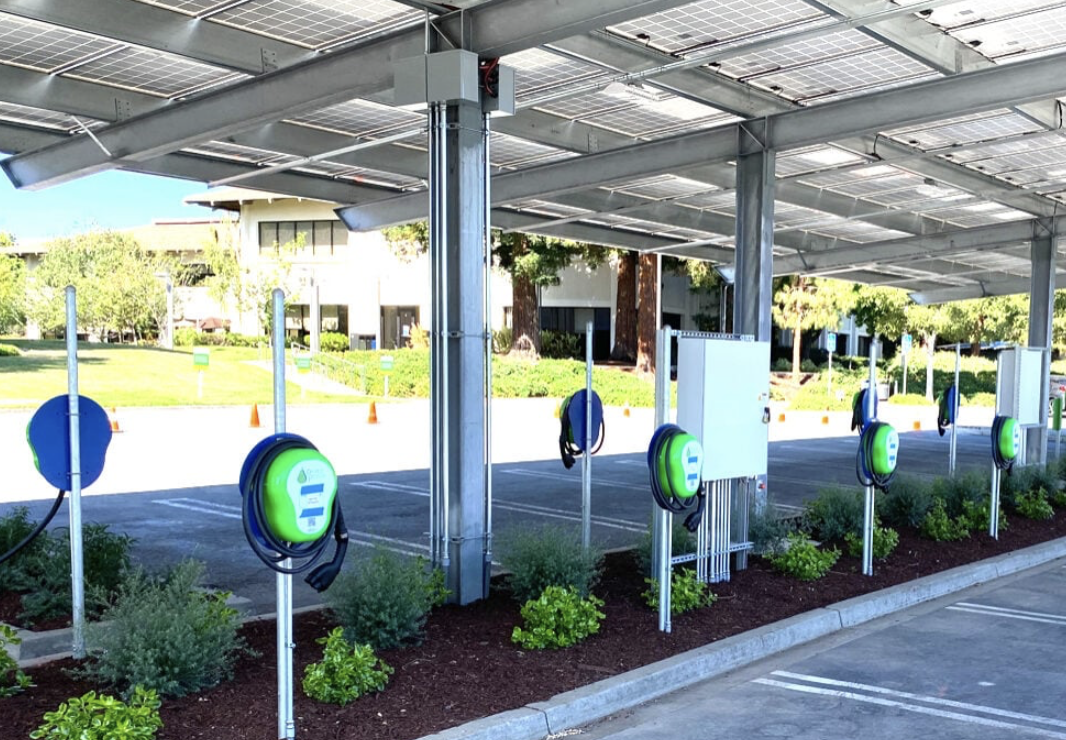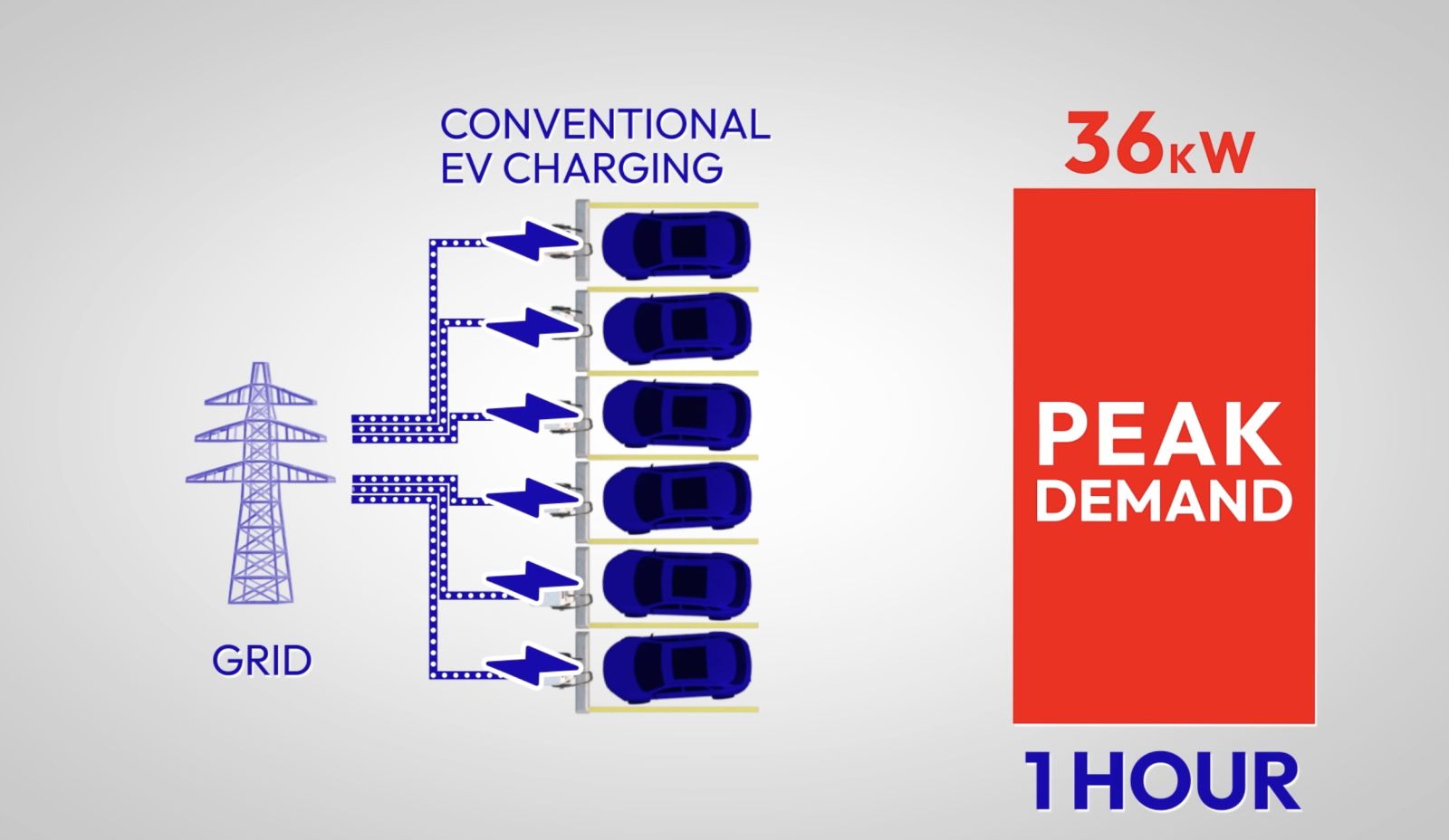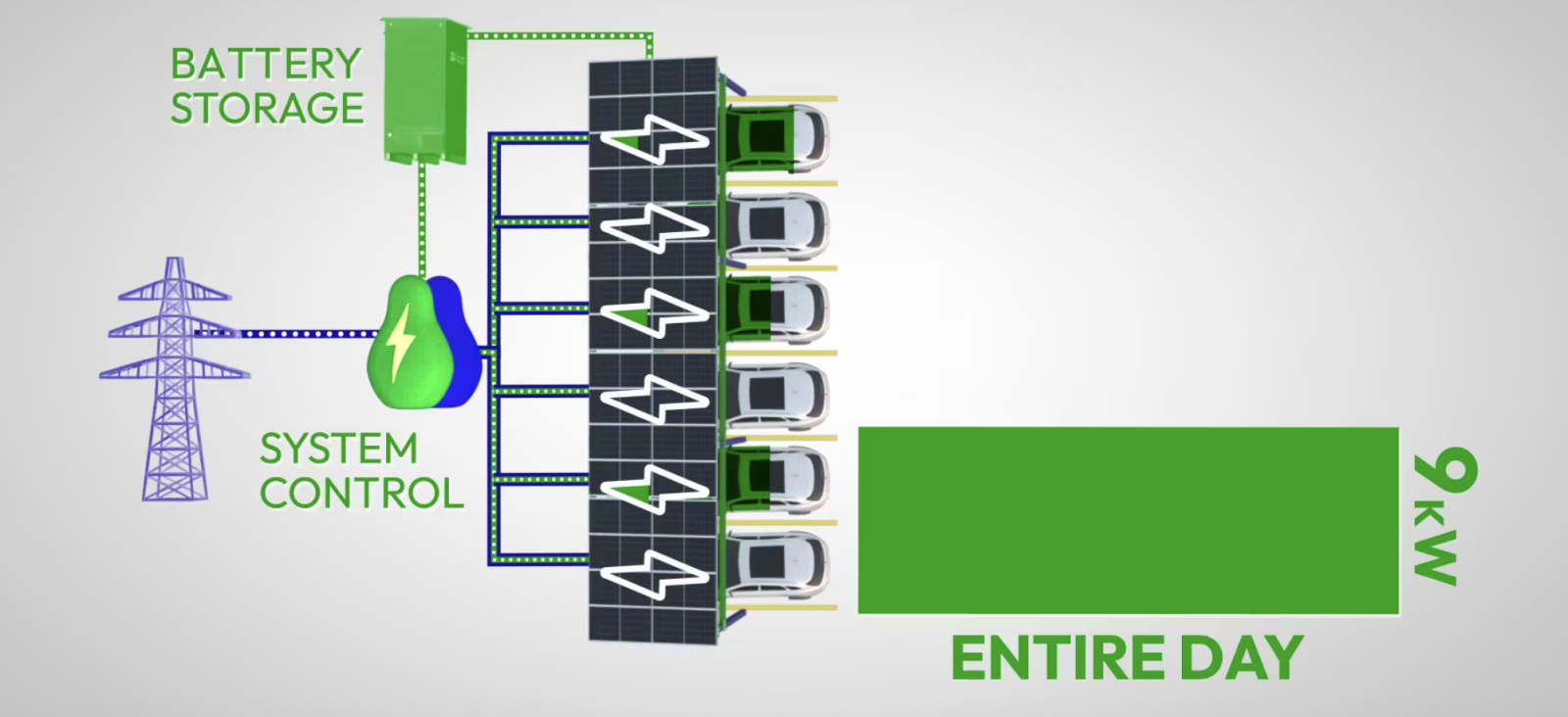Keeping EV Fleets Running in Emergencies
In little more than a decade, driving an electric vehicle (EV) has gone from being a statement made by environmentally conscious drivers to a real trend fueled by advances in technology, range, reliability, and convenience. The rise in EV adoption has gone beyond just privately owned vehicles, extending to fleets both commercial and government owned. This growth is due to a variety of factors, both economic and environmental. However, more fleet deployments have created new vulnerabilities for the governments operating these fleets, requiring new solutions. Switching from ICE to EV fleets creates dependency on the grid, but these systems can be made more resilient by integrating solar power and battery storage technology.

Adoption of EVs by municipal and county governments has seen steady growth. New York City, for example, has 4,000 EVs in its fleet, and is aiming for full electrification by 2030. Other cities are following suit. Nearly 14,000 electric school buses (ESBs) have been committed or deployed across the United States by almost 1,600 school districts and fleet operators.
Municipal and county governments considering fleet electrification are incentivized by numerous benefits that come with operating EVs. Switching to EVs reduces tailpipe emissions, improves local air quality, and reduces noise pollution. Research by the International Council on Clean Transportation (ICCT) found that electric vehicles in the U.S. produce 60-68 percent fewer emissions over their lifetime than gas-powered cars.
Transitioning to an EV fleet can also help governments reduce operating costs: Electricity is typically cheaper and more price-stable than gasoline or diesel, leading to substantial savings on fuel expenses over the lifespan of the vehicles. EVs generally have lower maintenance costs as they have fewer moving parts than internal combustion engine (ICE) vehicles, resulting in less wear and tear, reduced maintenance needs (no oil changes, transmission fluid flushes, fewer moving parts, etc.), and lower repair costs. Finally, fleet operators can expect a lower total cost of ownership (TCO) over the lifetimes of the vehicles, even if upfront costs are sometimes higher[TM1] .

A key vulnerability for EV fleet operators is their reliance on the grid to provide power. Current capacity limitations and insufficient grid connections can act as a bottleneck on aggressive expansion of EV fleets. Because EV chargers are a significant additional electric load, adding more than a few of them to the electric service capacity of existing buildings triggers a requirement for expanded electric service capacity. But utilities cannot keep up with the high demand for expanded service, and many urban locations are years behind in providing the new lines and transformers. As a result, EV chargers have overwhelmed utility grids in many locations, leading to delays in charger installation and energization. These obstacles, however, can be mitigated by augmenting the existing grid capacity with onsite solar, microgrid technology, and energy storage. Through this simple approach coupled with an intelligent energy management system, the existing grid capacity can be reformed to allow it to charge many electric vehicles without requiring utility expansion.
Beyond optimizing charging within the confines of grid capacity, solar and storage is also an important solution for assuring power delivery in more extreme outlier cases, such as during blackouts caused by emergencies. Severe weather, hurricanes, storms, and wildfires are increasingly the cause of extended blackouts in the United States, and they occur more often every year due to climate change. Moreover, many of these emergency situations occur precisely when these fleets might be needed most. That’s why solar and storage are so vital to protecting the resiliency of EV infrastructure.
In emergency use cases, EVs themselves can be combined with solar and storage and be used as mobile energy storage units. Vehicle-to-grid (V2G) technology allows EV batteries to send stored energy back to the grid or directly to a facility during peak demand or blackouts. Therefore, the bigger an EV fleet becomes, the greater battery storage capacity available to emergency personnel. Bidirectional charging can be used for powering a building, tools, road infrastructure, and everything in between. Combining bidirectional charging with battery storage and solar assets can not only create a more resilient fleet in emergency situations, but also provide capabilities that ICE fleets cannot.

What can municipal fleet managers do to best take advantage of solar and energy storage assets in emergencies? A comprehensive outage risk assessment can assess vulnerability to natural disasters or public safety power shutoffs, allowing managers to plan accordingly. Once these assets are installed, regular testing can ensure they function correctly during an outage and vehicles can seamlessly switch to backup power for charging. Finally, a productive working relationship with utility providers will help fleet managers understand local grid resilience and emergency protocols.
Electrification of fleets comes with many benefits. It also creates some key vulnerabilities that, if left unaddressed, can be exposed in times of emergency. Adding solar and storage assets can create a more resilient EV fleet that can be counted upon when it’s needed most.
Tom McCalmont is CEO of Paired Power, specializing in resilient solar microgrid charging solutions for EVs and EV fleets. He has over 25 years of solar, storage, and EV charging experience.
Paired Power | pairedpower.com
[TM1]This is changing rapidly and the costs may already be comparable to ICE for many EVs.
Author: Tom McCalmont
Volume: 2025 July/August









